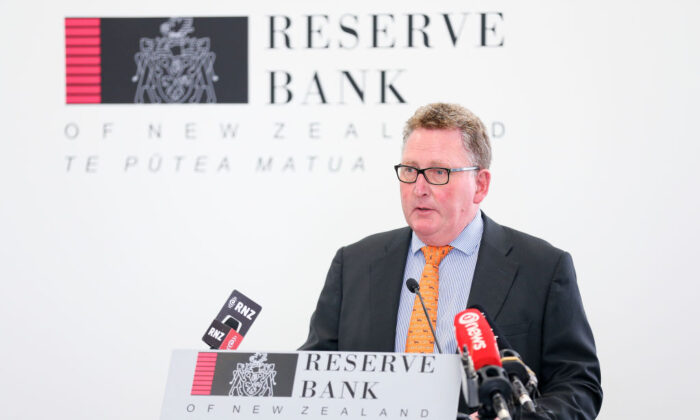New Zealand’s Reserve Bank says its following the trend of central banks worldwide, despite the US Federal Reserve’s recent 0.5 percentage point cut.
The Reserve Bank of New Zealand (RBNZ) has defended its decision to keep the official cash rate as high as 5.25 percent, easing just 25 basis points in August, despite several other countries making more significant cuts.
The U.S. Federal Reserve slashed interest rates by 50 basis points in September, bringing its cash rate to between 4.75 and 5 percent.
Also in September, the Bank of Canada, the European Central Bank (ECB), the Swiss National Bank, and Sweden’s Riksbank all lowered monetary policy rates. The ECB now has an official cash rate (OCR) of 3.50 percent, Switzerland is at one percent, and Sweden at 3.25 percent.
In its summary of the year, the RBNZ noted that consumer price inflation was at 3.3 percent in June 2024—still above the 1 to 3 percent target band but well down from 6 percent in June of the previous year.In his statement, Reserve Bank Governor Adrian Odd noted, “Internationally, central banks are retaining policy interest rates at restrictive levels for longer to ensure that inflation targets are met. Global economic growth remains below trend. However, our restrictive monetary policy has reduced capacity pressures in the New Zealand economy and lowered consumer price inflation.”
He cited “heightened geopolitical and climate conditions” as continued risks for New Zealand, calling both the domestic and international environments “challenging.”
“We continue to take steps to strengthen New Zealand’s economic resilience, bolstering our ability to withstand external shocks,” he wrote.
The Bank still expects inflation to fall within the target range by the end of this year.
“Core inflation and most measures of inflation expectations have declined, and the risks to the inflation outlook have become more balanced,” Orr said.
However, the Bank still has concerns about financial stability.
“New Zealand households and businesses faced increased debt-servicing costs as their borrowing repriced to higher interest rates. Signs of distress in banks’ lending portfolios have increased from low levels, and the extent of further increases will depend on economic activity and the labour market,” the governor’s statement said.
The Bank also released its Statement of Intent through to 2028, which aims for a resilient financial system that meets the needs of New Zealanders, and price stability to support the economy.
“We consider a resilient financial system to mean the capacity of the system to anticipate, prepare for, absorb, recover and learn from shocks, while also providing the financial services that we all rely on,” the RBNZ said.
A recent Reuters poll of 28 economists showed 60 percent expect a 50 basis point cut when the Bank’s Monetary Policy Committee meets tomorrow.

